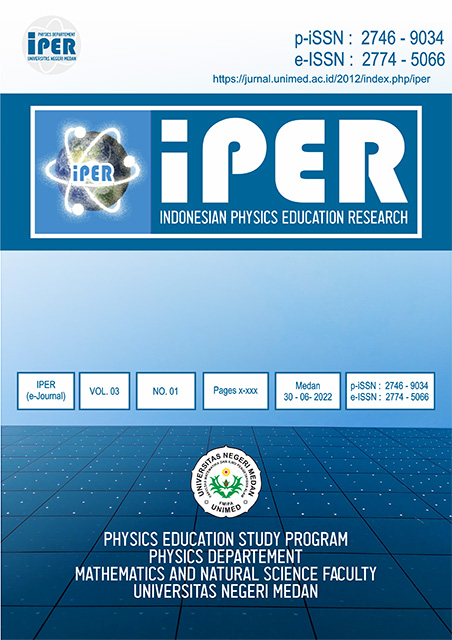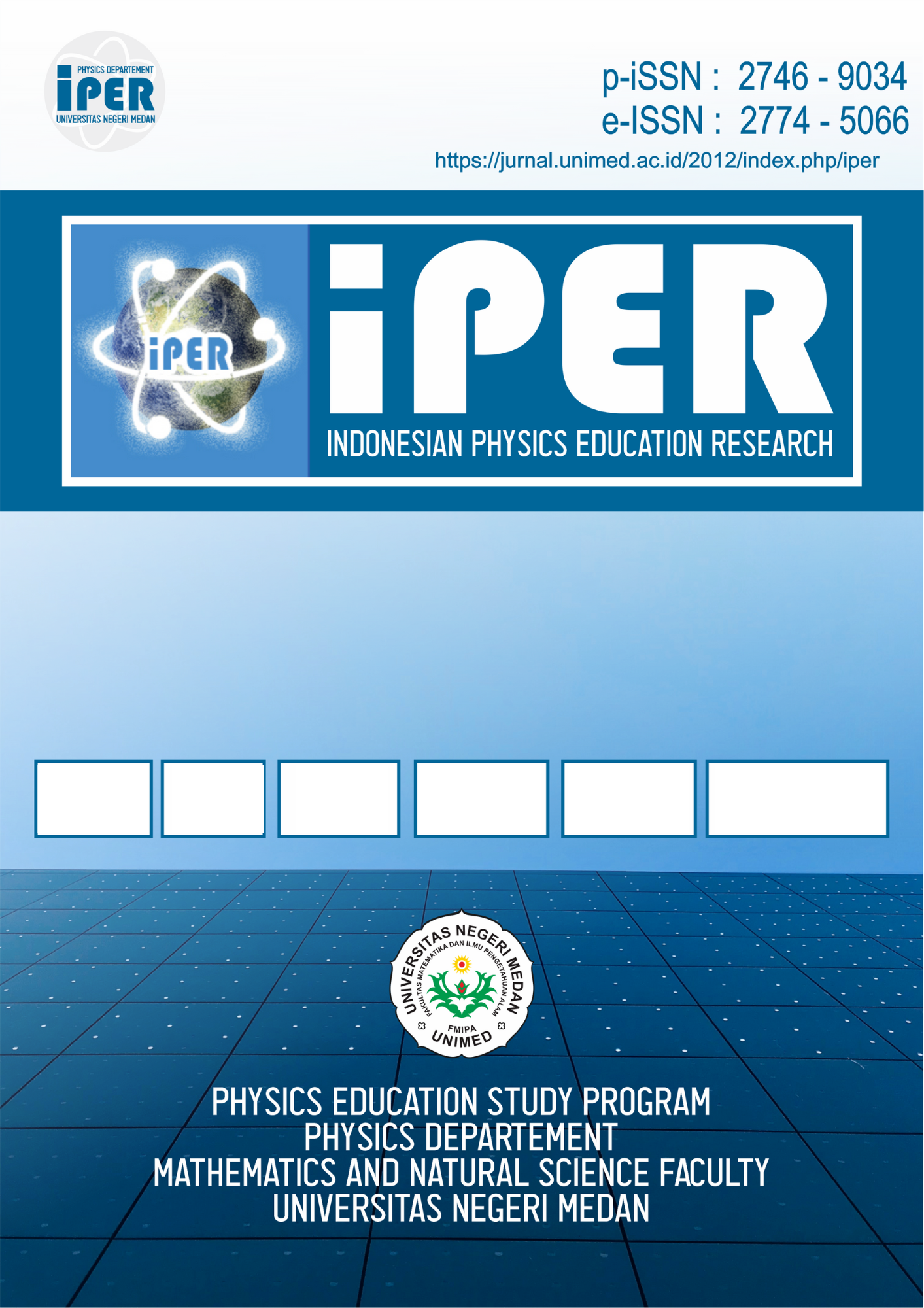QUALIFICATION OF PHYSICS TEST INSTRUMENTS LIKE-PISA
DOI:
https://doi.org/10.24114/iper.v3i1.63106Keywords:
Test Instrument, Physics, Scientific Literacy, PISAAbstract
This research aims to develop a physics test instrument based on scientific literacy PISA (Program for International Student Assessment). Development of test instruments using 4D models (Define, Design, Development, Disseminate). The test instrument was tested by expert validity with a CVI score of 1. The test instrument tested involved 130 participants. The results of the item validity test showed that the 20 items tested were valid with a Cronbach Alpha reliability value of 0.816 ("very good" category). The discrimination power test results showed that the developed items are in the "good" and "very good" categories. The results of the difficulty level test showed that there was one difficult item, 11 medium questions, and eight easy questions. This research shows that the physics science literacy skills of students who participate in this research show that students achieve good scores on average. Students who participated in this research had the highest achievement in the competence of evaluation and design of scientific investigations and had the same achievement in both the content and the procedural knowledge aspectsReferences
Arifin, Z. (2015). Evaluasi Pembelajaran. Bandung: pt. Remaia Rosdaka.
Arikunto, S. (2012). Evaluasi Program Pendidikan. Jakarta: Bumi Aksara.
Basuki. (2014). Asesmen Pembelajaran. Bandung: PT. Remaja Rosdakarya Offset.
Dewi, A. M., & Haryani, S. (2022). Development of a Three-Tier Test Instrument Based on Scientific Literacy in Electrolyte and Non-Electrolyte Solution Topics. 5(1), 1“16.
Erniwati, E., Istijarah, I., Tahang, L., Hunaidah, H., Mongkito, V. H. R., & Fayanto, S. (2020). Kemampuan Literasi Sains Siswa Sma Di Kota Kendari: Deskripsi & Analysis. Jurnal Kumparan Fisika, 3(2), 99“108. https://doi.org/10.33369/jkf.3.2.99-108
Kemendikbud, B. (2019). Pendidikan di Indonesia belajar dari hasil PISA 2018. Pusat Penilaian Pendidikan Balitbang KEMENDIKBUD.
Lawshe, C. H. (1975). A Quantitative Approach To Content Validity. Personnel Psychology. https://doi.org/10.1111/j.1744-6570.1975.tb01393.x
OECD. (2019). Programme for international student assessment (PISA) results from PISA 2018. Oecd.
Permatasari, P., & Fitriza, Z. (2019). Analisis Literasi Sains Siswa Madrasah Aliyah pada Aspek Konten, Konteks, dan Kompetensi Materi Larutan Penyangga. EduKimia. https://doi.org/10.24036/ekj.v1i1.104087
Rizkita, L., Suwono, H., & Susilo, H. (2016). Analisis Kemampuan Awal Literasi Sains Siswa Sma Kota Malang The Analysis Of Initial Ability Of Student™s Scientific Literacy In High School In Malang. Prosiding Seminar Nasional II.
Sutrisna, N. (2021). Analisis Kemampuan Literasi Sains Peserta Didik SMA di Kota Sungai Penuh. Jurnal Inovasi Penelitianitian.
Thiagarajan. (1974). Thiagarajan, Sivasailam; And Others Instructional Development for Training Teachers of Exceptional Children: A Sourcebook. Indiana Univ., Bloomington. Center for Innovation. Research and Development.





